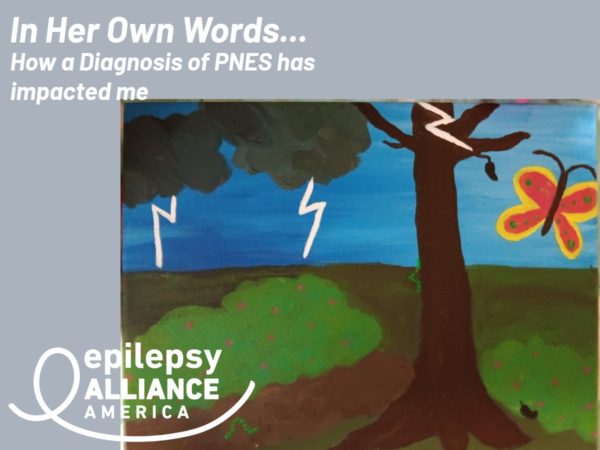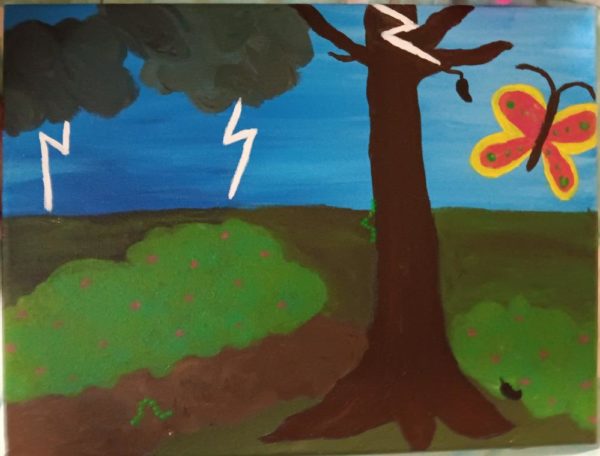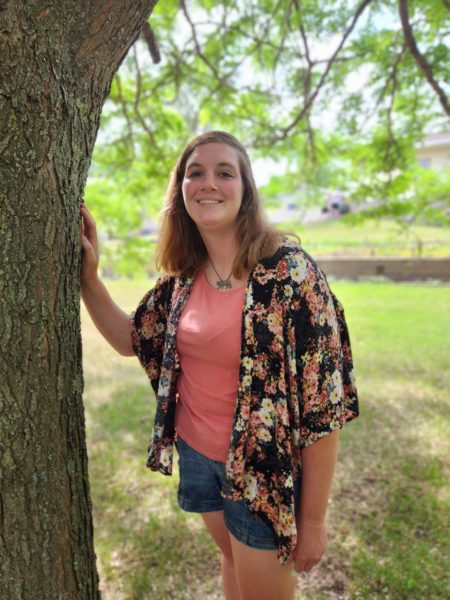How a Diagnosis of PNES has impacted me
The following was submitted to Epilepsy Alliance America as part of the 2023 Lorna Myers PNES Scholarship application process. The author reached out to Epilepsy Alliance America after receiving her scholarship award indicating she wanted to share her PNES journey more widely. We thank her for sharing her story with us, and with you.

How a Diagnosis of PNES has impacted me
For the past five years, I have had Psychogenic Non-Epileptic Seizures. The first one was in 9th grade, and the doctors told me that I was just dehydrated. When the episodes kept happening, I went to many different doctors and had tests done, but none of the doctors in any branches of healthcare could tell me what was wrong. Meanwhile, the episodes kept getting worse. The attacks would be more intense, with me screaming and thrashing on the floor, and they lasted as long as forty-five minutes, and I would have three or four episodes a day. Other times, I would wake up after the episode and would have no memory. I could walk and talk, but I had no idea who or where I was. My own mother could be standing in front of me, and I would not know her. The only way to get my memory back is to have another episode. I also developed other issues, including back problems, torn muscles, anxiety, and depression.
About two years after my first seizure, a neurologist had a tentative diagnosis of psychogenic nonepileptic seizures, and I finally had a treatment plan started. The seizures got better for a while. Having seizures so often meant that I missed a lot of class, but I still managed to be a straight A student. I was unable to get a job and I could not participate in activities at school because of my seizures. To me, it seemed like that because I had a diagnosis, things would be better from now on.
Now that I am in college, I understand that this is not true. Psychogenic non-epileptic seizures are forever evolving, and they find new ways to control your life. For me, that meant more severe memory loss issues, more intense seizures, and more of them happening in general. I had them every single day and one time, I had eleven in one day. Doctors have told me that having one seizure feels the same as running a marathon, so you can imagine how much this impacted my body. I not only was tired all the time, but I also lost a significant amount of weight, and I got physical scars and injuries, including a big spot of rugburn in the middle of my forehead that I now have a permanent mark from.
At my college, it is policy to call the first responders and 911 every time that a person has a seizure. I told them repeatedly that they would not be able to help me in any way and would only make things worse, but the school did not listen. This meant that those people were called nearly every day, and they grew frustrated that they had to keep coming back. They told me things like “because we keep coming to help you, other patients are dying” or “everyone here knows you’re faking the seizures, so just drop the act” or that I “wasn’t doing anything to make my situation better and deserved this”.
One day when I had a seizure and did not have my memory, they decided to force me to go to the hospital, which is illegal. They started shoving me toward the stretcher, and I started having another seizure. They started yelling at me to stop fighting them; we were going to the hospital. The first responders, police officers, and EMT’s picked me up and threw me onto the stretcher and started to put the restraints on. If someone has a seizure, restraining them puts them in a lot of pain: they need to be able to move. I was screaming and crying in pain, and the seizure was getting more violent. They took this as me defying them, and they grabbed my wrists and ankles to hold me down. When that did not work, three or four adults laid on top of me, and when I was begging them to stop again, someone put their hands around my neck and choked me. I said, “please stop hurting me” and they responded with “if you would stop fighting us, we would stop hurting you”. The bruises have faded, but now I have severe PTSD that can be triggered by something as small as the sound of sirens in the distance.
I had to file complaints to the ambulance company, and they blamed me for the incident until I sent them proof that I had a diagnosis of PNES. After that they apologized and said they would send out mandatory training for all their employees. Before, a diagnosis meant that I could do normal things that I wanted to. Now, a diagnosis means that I am a little more likely to be safe and treated with respect.
After my experience with the emergency medical crews, my seizures got a lot worse. When I would lose my memory because of a seizure, I would wake up and only have memories of that experience. If someone would ask me my name and I did not know, I assumed they were going to hurt me, and I would grab my wrists and throat and start a flashback to the event. Plus, any time a new person would come into my line of sight, I thought they were medical staff that wanted to hurt me. If I was outside and there was a road nearby, I thought it meant that an ambulance was on its way. During the episodes, I would start crying and begging the people who were helping me not to hurt me because I WAS NOT FAKING IT. PTSD fuels PNES. Because of my experience during one of my seizures, they got significantly worse.
Through painting, I have been able to come to terms with this experience.

The caterpillar had to work its butt off to even get up the tree (handle seizures) and then something out of its control like lighting (or EMT’s) knocked it down right when things were getting better. The chrysalis fell down, but the caterpillar still can come out as a bigger and better butterfly. There are a lot of circles in the brush strokes because trauma is circular; even if it seems like everything is going well, it will come back unexpectedly like a slap in the face. The caterpillar has 11 circles in its body, and that’s how many seizures I had the day after my trauma happened. That’s why the butterfly only has 11 green circles. It’s a scar that I’ll have forever but that’s okay.
About Alyssa:
Alyssa is a 2023 recipient of a Lorna Myers PNES Scholarship which is managed by Epilepsy Alliance America.

